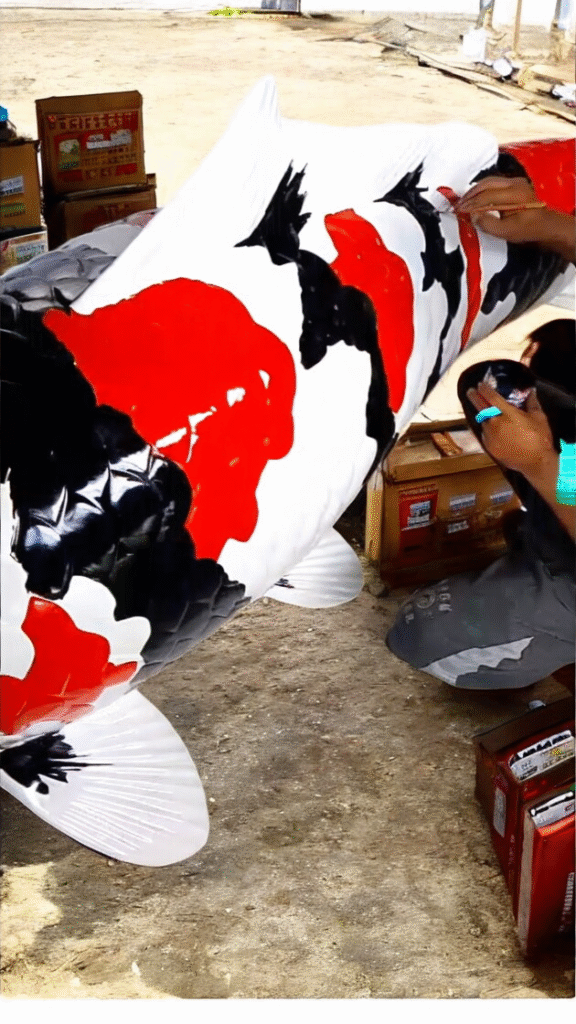
Have you ever walked past a stunning building and thought, “Wow, how did they even build that?” There’s a good chance fiberglass had something to do with it. From sleek facades to futuristic interiors, fiberglass is silently transforming the world of architecture. It’s light, strong, flexible, and surprisingly stylish — the kind of material every architect secretly loves. If you’re curious about how fiberglass is used in architectural design and why it’s becoming the go-to solution for modern buildings, keep reading. You’re about to discover a whole new side of architecture you never noticed before!
1. Sculpting Bold and Beautiful Facades
One of the most eye-catching ways fiberglass is used in architectural design is through building facades. You know those smooth, seamless, sometimes curvy exteriors that look like something out of a sci-fi movie? That’s often fiberglass at work. Architects love using fiberglass panels because they can be molded into just about any shape — giving you endless design freedom. Plus, they’re super lightweight compared to traditional materials like concrete or steel, so the installation is faster and less expensive. And let’s not forget durability: fiberglass holds up beautifully against sun, rain, wind, and even pollution. So if you’re dreaming of a building that makes people stop and stare, fiberglass might just be the magic behind it.
2. Crafting Creative Interior Features
It’s not just the outside of a building that benefits from fiberglass. Step inside, and you’ll find fiberglass being used to create stunning ceilings, walls, columns, and even furniture. Why? Because it’s incredibly versatile. Want a ceiling that looks like waves? Fiberglass can do that. Need a column with intricate patterns that would take forever to carve from stone? Fiberglass has you covered. Designers also love how fiberglass can mimic the look of other materials — like wood, metal, or stone — but without the heavy weight or high cost. So basically, you get all the style with none of the stress. It’s a win-win for anyone designing a space that feels fresh, modern, and one-of-a-kind.
3. Solving Structural and Sustainability Challenges
Beyond its good looks, fiberglass also brings real performance benefits to architectural design. For starters, it’s incredibly strong for how light it is. That makes it perfect for creating complex shapes and large installations without putting too much load on the building. It’s also resistant to corrosion, which makes it ideal for structures near the ocean or in humid environments. And here’s the best part: fiberglass is a sustainable choice. It lasts for decades with very little maintenance, and it can even be made from recycled materials. So when you choose fiberglass, you’re not just building something cool — you’re also building smart and sustainable.
4. Making Roofing and Domes Look Effortless
Another amazing way fiberglass is used in architectural design is in roofing and domes — especially when the goal is to create large, curved, or lightweight structures. Fiberglass allows you to build wide spans without heavy support systems, which is a game-changer for open-air spaces, stadiums, or even luxury villas. It’s also resistant to UV rays and moisture, making it a long-lasting choice for roofs that are constantly exposed to the elements. And let’s be honest — when was the last time you saw a dome that looked both futuristic and elegant? That’s the fiberglass effect in action. It brings beauty and brains together, making your structure look iconic without overcomplicating the build.
5. Elevating Lighting and Translucent Design Elements
Here’s something you might not expect: fiberglass can glow. Okay, maybe not like a lightbulb, but it can be made translucent — which opens the door for breathtaking lighting features in both interior and exterior spaces. Imagine a softly glowing wall or a backlit ceiling that creates ambiance without the harshness of direct light. Translucent fiberglass panels are used to diffuse light beautifully, turning a simple room into an atmospheric experience. This application is especially popular in high-end retail spaces, modern office lobbies, and art galleries — places where mood and design matter. So if you want to add a little glow-up to your space, fiberglass makes it easy to light things up with style.
Conclusion: Design Without Limits
So, how is fiberglass used in architectural design? In just about every way imaginable. It lets you break the rules, think outside the box, and create buildings that are as bold and unique as your ideas. From dramatic facades to functional interiors and eco-friendly solutions, fiberglass is the secret weapon of forward-thinking architects and designers. If you want to create something truly extraordinary — something that stands out, performs well, and lasts a lifetime — fiberglass is the way to go. So go ahead, dream big. With fiberglass, there really are no limits.
